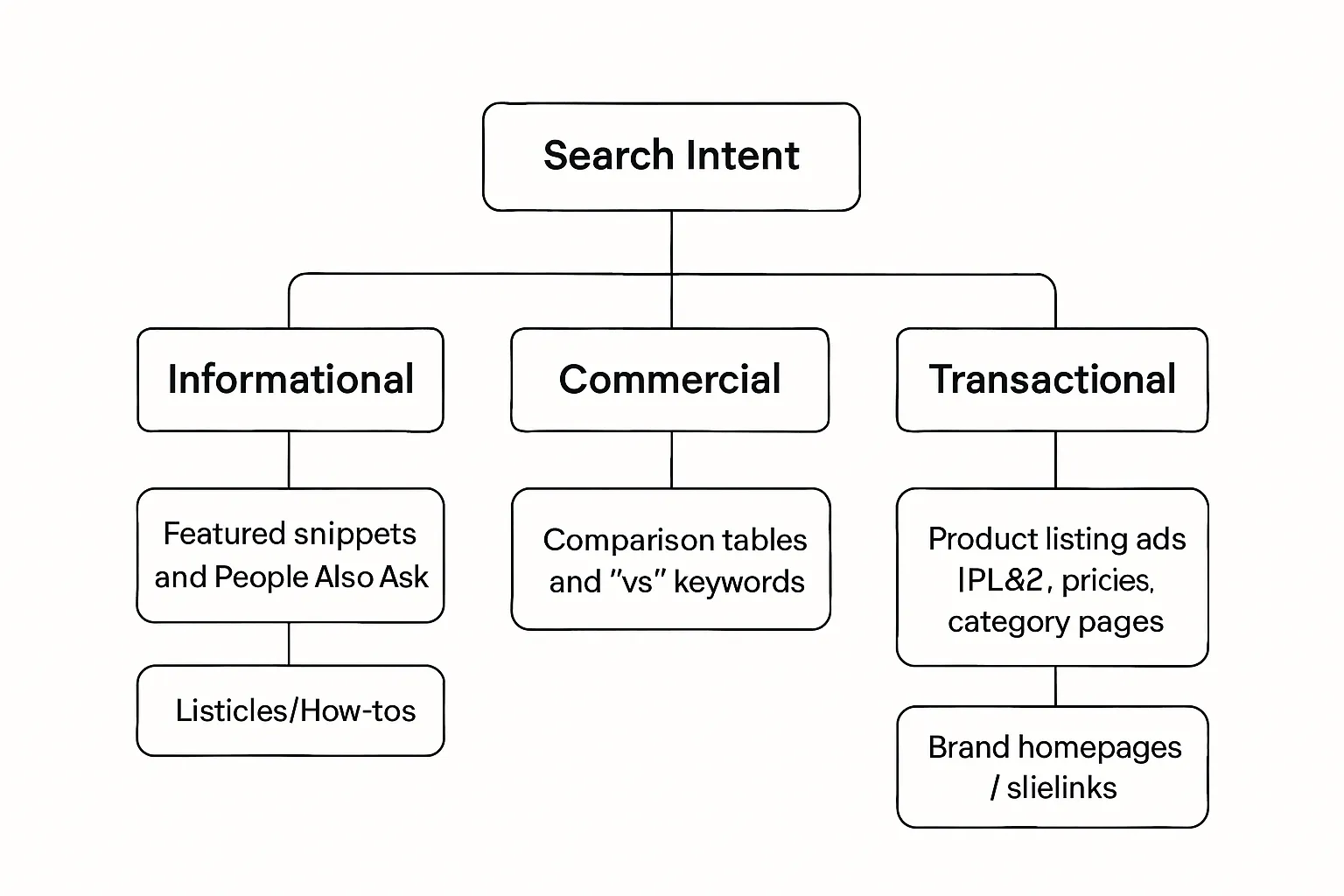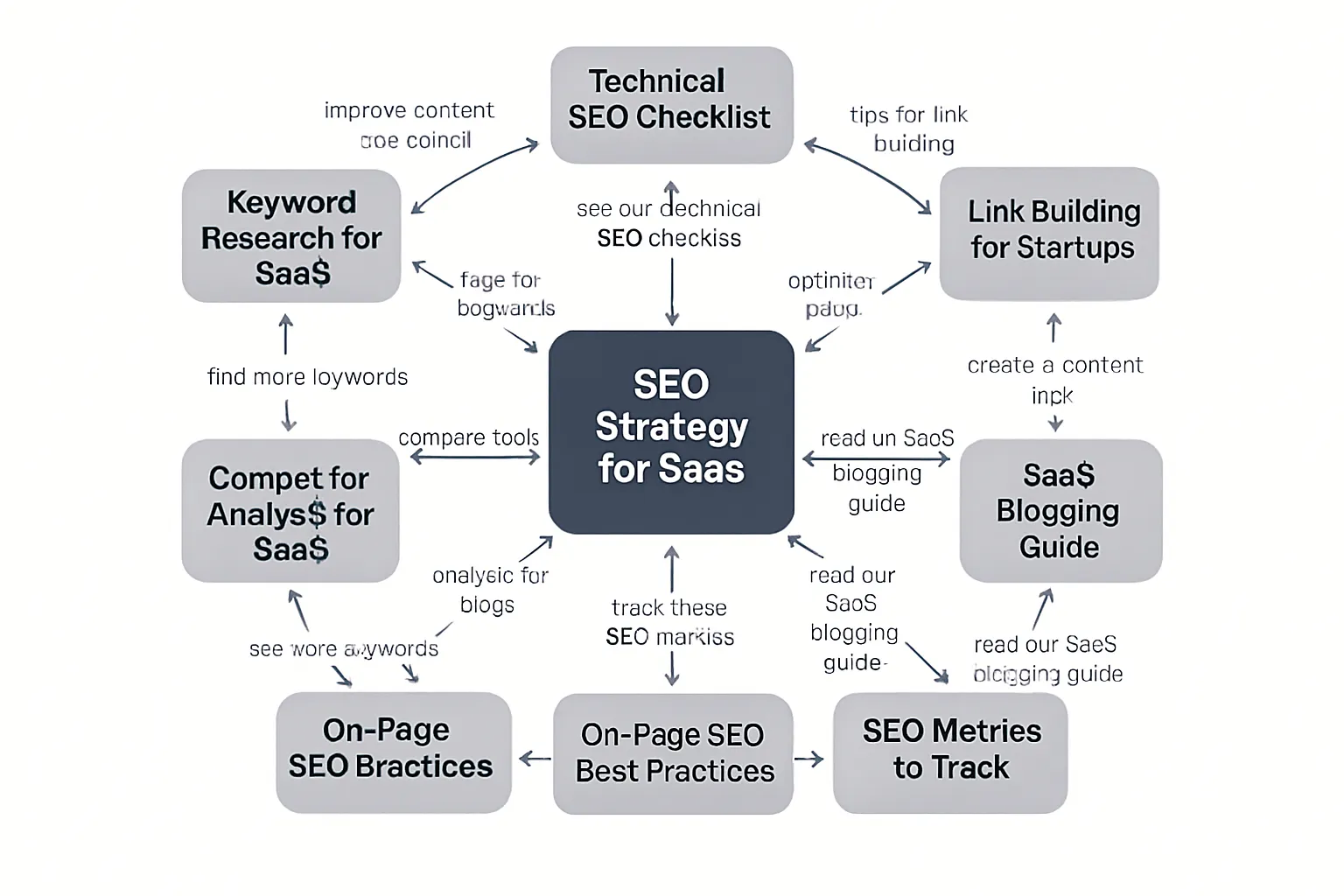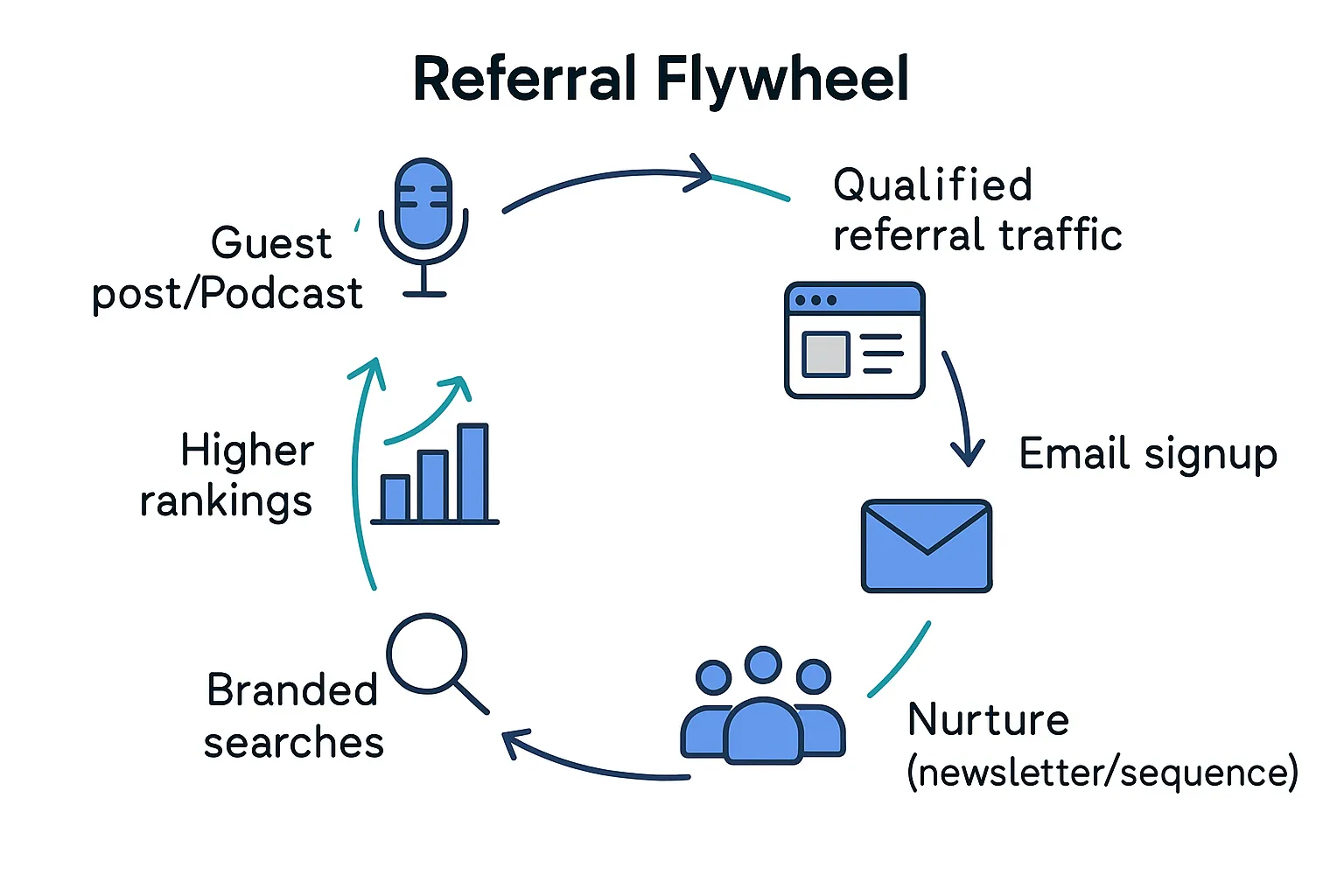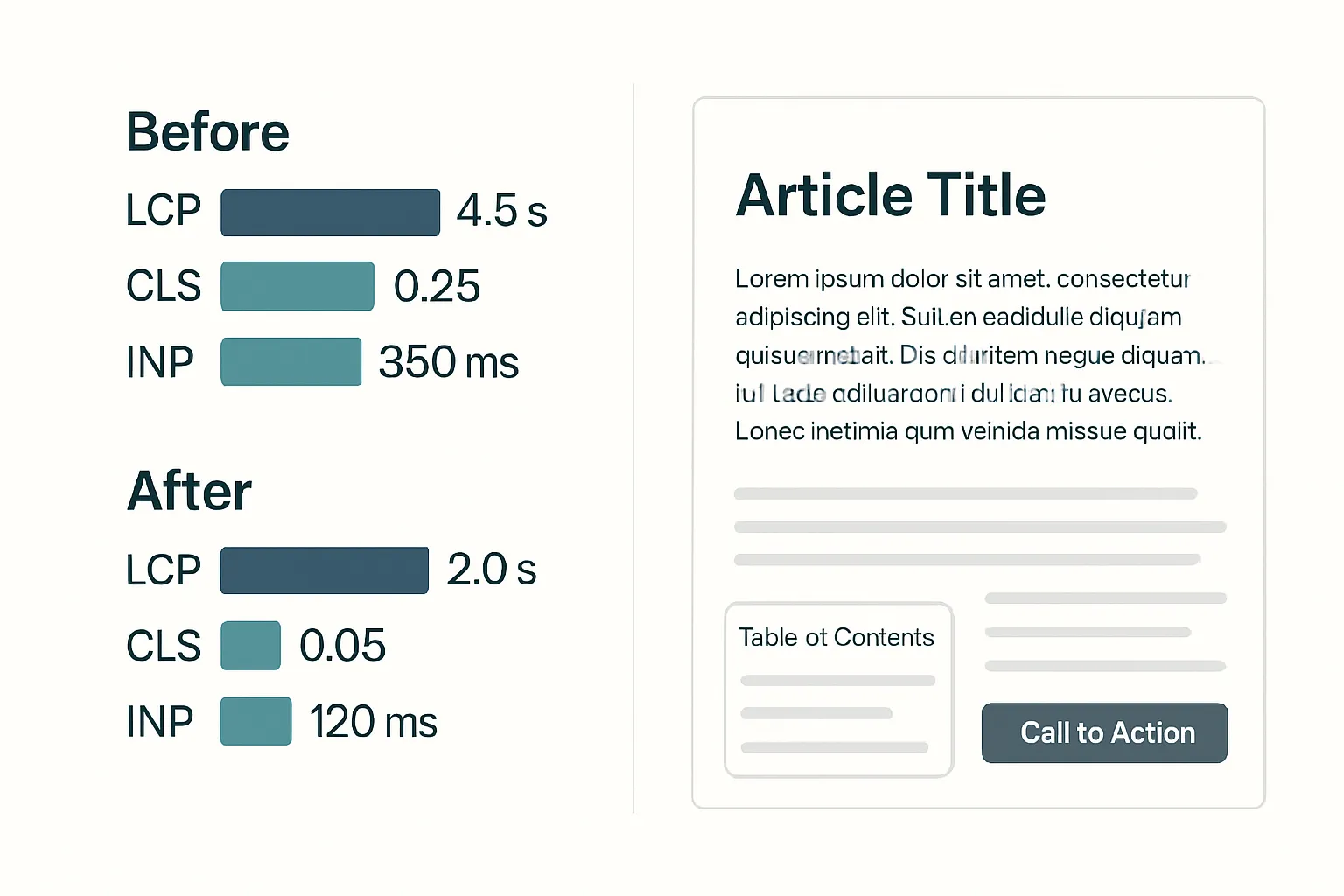Introduction: What “growing blog traffic” really means in 2024
If you want to grow blog traffic this year, forget chasing vanity spikes. In 2024, sustainable growth comes from a simple equation: quality + distribution + consistency > random volume. Your best path to blog popularity isn’t publishing more - it’s publishing better, promoting smarter, and showing up on a reliable cadence that compounds results over time.
"Long-form content - articles over 1,000 words - receives 56% more social shares than shorter posts." - Source
What does success look like beyond raw visits? The goal is aligned traffic that converts:
Relevance: visitors who match your ideal customer profile and arrive via intent-aligned keywords.
Engagement: higher time on page, deeper scroll, and strong internal link CTR.
Growth assets: email signups and newsletter engagement that you own.
Pipeline impact: trial signups, demo requests, and qualified leads - tracked back to content.
Here’s the fast overview of the 8 strategies we’ll cover to help you get blog traffic the right way:
SEO intent mapping: match topics to search intent (informational, commercial, transactional) so the right readers find the right post.
Topic clusters: build authority with tightly linked clusters and smart internal links.
Content velocity: set a realistic publishing cadence that compounds topical authority.
Refreshes: systematically update, expand, and relaunch winners to keep rankings and clicks climbing.
Email distribution: turn posts into subscribers and turn subscribers into consistent traffic.
Partnerships: co-marketing, guesting, and PR to earn authority and referral traffic.
Social discovery: meet readers where they hang out (LinkedIn, X, Reddit, communities) with native-first snippets.
UX/technical: faster pages, cleaner UX, and structured data to lift rankings and conversions.
How this guide beats competitors: fewer tactics, deeper execution. You’ll get step-by-step frameworks, checklists, and automation tips built for SaaS and tech teams - so you can operationalize growth without adding headcount. And because we’re BlogBowl, we’ll show where automation removes grunt work: AI-assisted keyword research, auto-internal linking, AI-written drafts that fit your brand voice, scheduled publishing, built-in newsletter sends, and privacy-friendly analytics that connect content to trials and demos. This is how modern teams grow blog traffic with less effort - and more impact.
Strategy 1: Intent-first, long‑form SEO to grow blog traffic sustainably
Winning organic traffic in 2024 isn’t about publishing more - it’s about aligning every post with the searcher’s intent and delivering the most helpful, in‑depth answer on the page. This is the foundation for sustainable growth that compounds rankings, shares, and conversions.
Map queries to clear intent
Classify target keywords by intent:
Informational: “how to…”, “what is…”
Commercial: “best…”, “tools for…”, “X vs Y”
Transactional: “buy”, “pricing”, “download”
Navigational: branded terms, product names, login pages
Mirror the SERP before drafting:
Analyze the top 10 for content type and depth (guides, comparisons, category pages, docs)
Note SERP features: featured snippets, PAA, videos, reviews, PLAs, sitelinks
Match the winning format and raise the bar with better structure and unique value

Structure for depth without fluff
Use modular outlines (clear H2/H3) that fully answer the primary query and related sub‑questions (PAA, synonyms, and real user objections)
Naturally place primary/secondary keywords in:
Title and H1
Intro (first 100–150 words)
Relevant H2/H3 subheads
Image alt text and captions (where appropriate)
Anchor text for internal links
On-page essentials that still move the needle
Descriptive slugs (short, human-readable), compelling meta descriptions (benefit + keyword + CTA), and schema (HowTo, FAQ, Product, Review) when relevant
Add unique angles:
Original examples and screenshots
Lightweight data points (quick benchmarks, internal metrics, survey snippets)
Clear takeaways and checklists to boost time on page and shares
"Create helpful, reliable, people-first content." - Source
Pro tip for SaaS teams
Pair each article with a crisp, funnel‑aligned CTA so you don’t just get blog traffic - you convert it:
Informational posts → downloadable checklist or template (email capture)
Commercial posts → comparison table + “See live demo” CTA
Product‑adjacent posts → interactive calculator or 14‑day trial With BlogBowl, you can attach CTAs, auto‑insert internal links, and schedule newsletter sends so every long‑form post is pre‑wired for growth.
Strategy 2: Build topic clusters + internal links to boost blog popularity
Design your cluster architecture
Choose 3–5 core themes (pillars) aligned to ICP pain points (e.g., “SEO for SaaS,” “Product-led growth,” “Technical content marketing”)
For each pillar, plan 8–12 supporting posts that answer specific subtopics and questions (FAQs, comparisons, playbooks, templates)

Internal linking rules that compound rankings
Link every cluster post to its pillar using descriptive anchor text (e.g., “SaaS SEO strategy guide,” not “click here”)
Interlink siblings contextually (e.g., “keyword research” → “content brief template” → “on‑page SEO checklist”); avoid orphan pages
Add “Further reading” navigation blocks at 60–80% scroll depth to drive deeper engagement and spread link equity
Execution tips
Keep URLs consistent and simple (pillar/category > topic), e.g., /seo-saas/keyword-research, /seo-saas/technical-checklist
Refresh anchor text over time to match evolving rankings and semantics; add new internal links when you publish related content
Time-saver
Automate internal linking suggestions and run orphan-page checks monthly to keep authority flowing and clusters healthy (BlogBowl can surface link opportunities, add internal links at publish time, and flag orphans automatically)
Strategy 3: Content velocity that doesn’t burn out your team
Publish predictably, not perfectly
Establish a minimum viable cadence (e.g., 1–2 quality posts/week) and stick to it - consistency compounds authority.
Batch work to reduce context switching:
Monday: briefs and outlines
Tuesday: SME interviews and source collection
Wednesday: drafting
Thursday: edit, visuals, on‑page SEO
Friday: publish + distribute + retrospective
Pre-approve reusable post types (how‑to, comparison, teardown, case study) so teams move faster within proven formats.
Editorial operating system
One backlog, one calendar, clear status states:
briefing → drafting → SME review → edit → publish → distribute → update
Define “done” with a tight checklist:
SEO: keyword mapped, intent verified, meta title/description, H2/H3 structure, schema (if relevant)
Content: unique examples, screenshots, sources, FAQ/PAA coverage
Links/UX: 5–10 internal links added, descriptive anchors, further‑reading block at 70% scroll, hero CTA
Media: compressed images with alts, illustrative diagram or short clip if helpful
Distribution: social snippets (3–5), email blurb, UTM‑tagged links, repost plan, refresh date
Add a “refresh SLA” (e.g., top posts reviewed every 90–120 days).
Leverage smart automation
Pre-generate for every post: 3 social snippets (LinkedIn/X), 1 email blurb, 5 suggested internal links, and a 60‑second summary.
Auto-attach CTAs based on intent (informational → checklist/template, commercial → comparison/demo).
Use automated orphan-page checks and internal link suggestions monthly to keep authority flowing.
With BlogBowl: AI briefs, outline templates, internal‑link autoinsert, scheduled publishing, built‑in newsletter sends, and privacy‑friendly analytics tie content to trials/demos.
Content Velocity Planner | Team size | Weekly publishing target | Workflow bottleneck to watch | Automation shortcuts |
|---|---|---|---|---|
Solo creator | 1 | 1 high‑quality post | Context switching; SME access | AI brief/outlines, auto internal‑link suggestions, social/email snippets on publish |
2–3 person team | 2–3 | 2 posts | Review lag between writer/editor/SME | Shared templates, status automation, scheduled publishing + newsletter send |
4–6 person team | 4–6 | 3–4 posts | Asset creation (visuals) and distribution | Image generation/compression, snippet library, auto UTM + channel scheduling |
Agency/enterprise | 7+ | 5+ posts | Cross‑team coordination; consistency | Multi‑workspace calendars, approval workflows, bulk refresh queues, analytics alerts |
Strategy 4: Refresh and republish evergreen winners
Spot high‑leverage refreshes
Filter candidates in Search Console and Analytics:
Posts with slipping rankings (e.g., dropped from positions 1–3 to 4–10)
High impressions but low CTR (rewrite titles/meta and realign intent)
Out‑of‑date stats, screenshots, or product UIs
Prioritize pages with existing backlinks and historical traffic - they’re the quickest way to grow blog traffic by reclaiming lost visibility.
"61% of companies that achieve the highest success in content marketing conduct content audits at least twice a year." - Source
What to update
Revalidate search intent; adjust format if the SERP now favors lists, comparisons, or step‑by‑step how‑tos
Upgrade examples and add 2024 data points; replace dated screenshots and expand with fresh subtopics
Tighten intros to answer the query faster; add FAQs pulled from People Also Ask and internal search queries
Improve visuals (diagrams, tables, short clips); compress images and add descriptive alt text
Strengthen internal links: add 5–10 new contextual links from related posts and point to new cluster assets
Republishing playbook
Make substantive updates, then change the publish date and note “Updated on” in the header
Resubmit the URL in Google Search Console for faster re‑crawl
Relaunch via email and social; highlight “What’s new” to lift CTR
Add fresh internal links from newly published or top‑traffic posts to push authority back into the refreshed page
Set a reminder to review again in 90–120 days; track rank/CTR deltas and conversions (demos, trials, email signups)
Content Update Priority Matrix | Page | Current rank/traffic | Link equity | Freshness gap | Effort | Impact score |
|---|---|---|---|---|---|---|
1 | /blog/saas-keyword-research-guide | #8 | RD: 112 (High) | 14 months | Medium | 9 |
2 | /blog/product-led-growth-examples | #12 | RD: 64 (Med) | 10 months | Low | 8 |
3 | /blog/technical-seo-checklist | #5 | RD: 189 (High) | 18 months | Medium | 9 |
4 | /blog/best-live-chat-tools | #15 | RD: 43 (Med) | 6 months | High (market shifted) | 7 |
5 | /blog/content-brief-template | #4 | RD: 98 (High) | 9 months | Low | 8 |
6 | /blog/onboarding-email-examples | #11 | RD: 57 (Med) | 16 months | Medium | 8 |
7 | /blog/ai-for-blogging-workflows | #18 | RD: 21 (Low) | 4 months | Medium | 6 |
8 | /blog/churn-reduction-strategies | #9 | RD: 76 (Med) | 13 months | Medium | 8 |
Tip: BlogBowl surfaces slipping pages, auto‑builds refresh checklists (intent, H2/H3 gaps, data updates), and suggests internal links at publish time - so you can get blog traffic wins from refreshes on autopilot.
Strategy 5: Turn readers into repeat visitors with email
Make email your owned traffic engine
Offer a relevant lead magnet per pillar (checklist, template, mini course) so every post has a natural upgrade path.
Add contextual opt‑ins mid‑post and exit‑intent captures; match the copy to the reader’s current topic for higher conversion.
Use simple forms, minimal fields, and clear privacy copy to reduce friction.
"Email marketing delivers an average ROI of $36 for every $1 spent." - Source
Newsletter structure that drives clicks
Format: hook → 1–2 insights → single CTA to your newest or refreshed post. Keep it scannable and focused.
UTM‑tag every link; track open → click → read → convert in analytics to prove impact.
Feature a “What’s new” block for fresh content and a “From the archive” slot for cluster support.
Automations that compound
Welcome series: send your top 3 posts in the cluster the subscriber came from + one soft CTA (template, demo, or checklist).
Behavior tags: trigger deep‑dive content based on past clicks (e.g., clicked “technical SEO” → send audit checklist next).
Re‑engagement: if no opens in 60–90 days, send a “pick your topics” preference email or pause sends.
With BlogBowl, you can auto‑generate email blurbs from new posts, schedule newsletter sends at publish, and measure reads-to‑trial conversions - all in one place.
Strategy 6: Earn qualified traffic via guest posts and partnerships
Find right‑fit platforms
Target sites your ICP already reads; prioritize editorial rigor, audience fit, and engaged comments over raw DA.
Pitch gap‑filling topics that extend the host’s library and naturally reference your best posts and tools.
Build a lightweight list: publication, audience, contributor guidelines, editor contact, “what they publish,” and a tailored angle.
Make every placement work harder
Include a helpful resource CTA (template, calculator, mini‑tool) in your bio or in‑body (where allowed) that maps to the article’s intent.
Repurpose the article:
LinkedIn thread with 5–7 takeaways and a soft CTA
Email teaser: hook + 2 insights + “Read on” link (UTM‑tagged)
Add internal links from your related posts to support the message and improve rankings

Optional accelerators
Podcast guesting on tightly‑aligned shows to earn natural links, spark branded searches, and build trust at scale.
Co‑marketing sprints: webinar + recap post + shared email send - triple the distribution from one asset.
With BlogBowl, queue guest posts, attach CTA assets, and auto‑generate repurposed snippets so every placement turns into a predictable referral flywheel.
Strategy 7: Social discovery engines (LinkedIn, X, Reddit, Quora) done right
Lead with value, link second
Share 2–3 punchy insights from your article as native content first; add the link at the end (or in comments where appropriate) to minimize algorithmic throttling and maximize engagement.
Adapt per platform:
X (Twitter): write a 6–10 tweet thread with 1 idea per tweet; pin the thread and place the link in the last tweet.
LinkedIn: post a 7–10 slide carousel or a 5–7 paragraph text post with a clear hook, scannable bullets, and 1 CTA.
Reddit: contribute a full answer in niche subs (e.g., r/SEO, r/SaaS); include the link only if it directly extends your answer.
Quora: deliver a helpful, structured answer and link for deeper context.
Keep your message platform-native: no screenshots of tweets on LinkedIn; no sales-y tone in Reddit communities.
Weekly distribution rhythm
Day 0: Publish + send newsletter (hook → 1–2 insights → single CTA); add UTMs for clean attribution.
Day 1–3: Ship 1 LinkedIn post + 1 X thread (alternate angles); respond to comments within 2 hours to boost reach.
Day 4–5: Post 1–2 in-depth community answers (Reddit/Quora); add a light “learn more” link only when useful.
Day 7: Publish a recap post (“What we tested this week + key learnings”) and internally link to your original article.
Pro move: Turn top comments into micro-posts and add them back into your cluster pages as social proof.
Measure and refine
Track CTR per individual post, not just aggregate traffic, to spot which formats, hooks, and angles drive actual clicks.
Kill the underperformers fast; rework the hook, change the format (thread vs carousel), or move the link.
Tie everything to outcomes: post-level CTR → time on page → internal link CTR → conversions (demo, trial, signup).
BlogBowl boost: auto‑generate platform‑native snippets, append UTMs, schedule distribution, and see which posts directly drive trials and demos.
Channel Distribution Matrix | Platform | Best post format | Cadence | Effort | Typical CTR | Notes |
|---|---|---|---|---|---|---|
1 | Carousel (7–10 slides) or text post with strong hook and 1 CTA | 3–4x/week | Medium | Moderate | Optimize first line; keep 1 link max; use 3–5 relevant hashtags; engage comments fast. | |
2 | X (Twitter) | 6–10 tweet thread; last tweet = link | 4–7x/week | Medium | Low–Moderate | Front-load value; 1 idea per tweet; use 1–2 supporting visuals or a mini-graphic. |
3 | In‑depth answer/case study tailored to sub rules | 1–2x/week | High | Low–High (sub-dependent) | Lead with substance; link only if it extends the answer; build karma first. | |
4 | Quora | Structured, thorough answer with scannable subheads | 1–2x/week | Medium | Low–Moderate | Answer newer questions; include a short bio line; keep links contextual and minimal. |
5 | Communities/Slack | Short insight + resource; no hard sell | 2–3x/week | Low–Medium | Moderate | Follow channel norms; rotate value posts, AMAs, and resource shares; avoid link dumping. |
Pro tip: Treat social as distribution R&D. Use the highest‑performing hooks and questions from your posts to update your article’s intro, subheads, and FAQ - and watch your organic traffic and blog popularity climb.
Strategy 8: Faster pages and better UX = more traffic and conversions
Speed and Core Web Vitals, simplified
Compress images (WebP/AVIF), lazy‑load below‑the‑fold media, preconnect fonts/CDN, and minimize JS bloat (defer non‑critical scripts; remove unused libraries).
Target thresholds: LCP < 2.5s, CLS < 0.1, INP < 200ms.
Quick wins: inline critical CSS, serve fonts locally, leverage HTTP/2, cache aggressively, use a CDN.

Make reading effortless
Use 60–80 characters per line, 1.5–1.8 line‑height, and scannable H2/H3 subheads; add a table of contents (TOC) for long guides.
Employ generous white space, clear contrast, and predictable heading hierarchy. Avoid walls of text; break with bullets, images, and pull‑quotes.
Add a “sticky” in‑page nav and highlight key actions (e.g., “Download checklist,” “See demo”) as the reader scrolls.
Close the loop
Clear, consistent CTAs on content pages (end‑of‑intro, mid‑post, end‑of‑post); add trust signals (customer logos, testimonials, data points).
Remove distractions: limit popups, avoid multiple competing CTAs, and keep sidebar elements minimal.
AB test above‑the‑fold intros, TOC placement, and CTA positions; measure impact on time on page, internal‑link CTR, and conversions.
BlogBowl advantage: ultra‑fast templates, automatic image optimization, built‑in TOC, sticky CTA blocks, and privacy‑friendly analytics - so UX improvements translate directly into more traffic and signups.
Conclusion: Start compounding results with BlogBowl
Growing blog traffic in 2024 isn’t about hacks - it’s about compounding small wins. When you align topics to intent, ship consistently, and distribute smartly, your results stack month after month.
Recap: 8 strategies that work together to grow blog traffic and authority
Intent‑first, long‑form SEO that answers the full query
Topic clusters + internal links to build topical authority
Sustainable content velocity with a predictable cadence
Refresh and republish evergreen winners
Turn readers into repeat visitors with email
Earn qualified traffic via guest posts and partnerships
Social discovery engines (LinkedIn, X, Reddit, Quora) done right
Faster pages and better UX for more traffic and conversions
Why momentum matters
Consistent publishing builds topical authority and lifts rankings across the cluster.
Smart refreshes reclaim positions, improve CTR, and extend content lifespan.
Owned distribution (email) ensures readers return - regardless of algorithm shifts.
Next step: Use BlogBowl to launch faster and grow on autopilot
Spin up a fast, SEO‑optimized blog in under 60 seconds
Automate daily SEO articles, internal linking, keyword research, and embedded media
Built‑in newsletter + privacy‑friendly analytics to track what converts (reads → signups → trials/demos)
Manage unlimited blogs, changelogs, and help centers with no code
Call to action Create your BlogBowl workspace and publish your first optimized post today at https://www.blogbowl.io.


